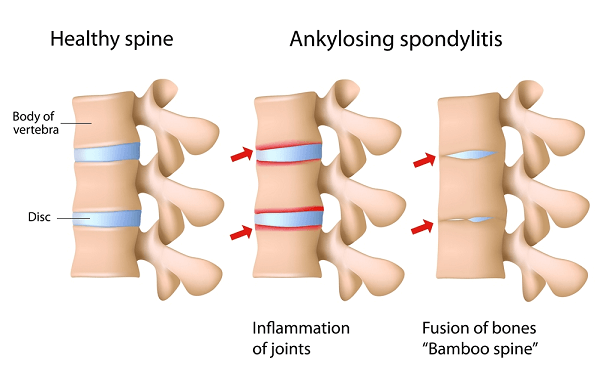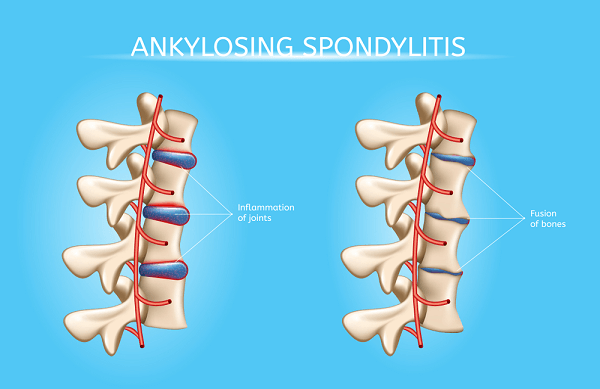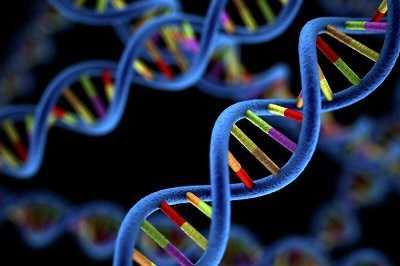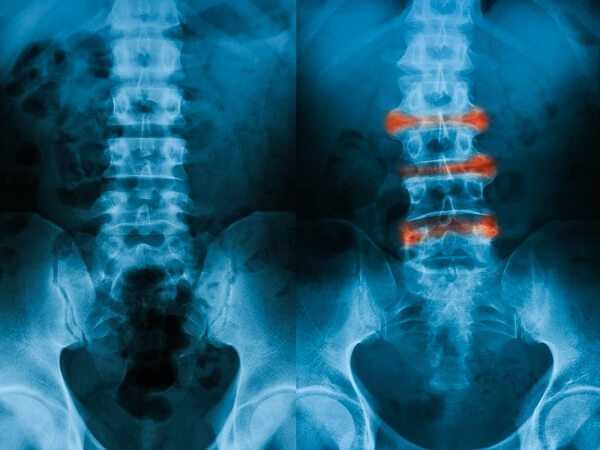About Ankylosing Spondylitis

Ankylosing spondylitis is a rheumatic disease which involves the arthritis of spine and sacroiliac joints. This disease can be caused due to pain and stiffness in the back, loss of motion, inflammation of the lungs, eyes and heart valves. It is also known as rheumatoid spondylitis, poker back etc. This disease affects about 150,000 to 300,000 Canadians. It appears between the ages of 15 and 30 and develops in boys three times more than women.

Causes of Ankylosing Spondylitis
- Genetically inherited
- HLA-B27 gene increase the cause of ankylosing spondylitis
- Environmental factors
- Exposure to bowel or urinary tract infections
Symptoms of Ankylosing Spondylitis
- Pain and tenderness in the ribs, hips, heels, shoulder blades and the bony parts of the spine
- Back pain
- Recurring inflammation in the eyes causing redness, blurred vision and pain
- Chronic back pain which lasts for months or years
- Back stiffness lasting for extended periods or after periods of rest

Diagnosis of Ankylosing Spondylitis
The diagnosis of ankylosing spondylitis is based on a physical examination, medical history, patient’s symptoms and blood tests. Early symptoms of this disease can be deceptive. It is very common in women which have mild spine involvement. Various tests are done to evaluate the signs of inflammation and pain in the low back or neck, limiting the expansion of the chest with full breathing etc. Ophthalmoscope is used to evaluate the inflammation of eyes. In various cases, X-rays are also being taken for the spine and the presence of HLA-B27 gene. Blood tests also determine the evidence of inflammation in the body. A blood test known as sedimentation rate is done to diagnose the ankylosing spondylitis. Another test, Urinalysis is done for checking the functioning of the kidney which can cause back pain.
Treatment of Ankylosing Spondylitis
The treatment consists of the medications, physical therapy and exercises. Medication decrease inflammation in the spine and suppress immunity, physical therapy and exercise improves the spine mobility, posture and lung capacity.
- Aspirin and nonsteroidal anti-inflammatory drugs are taken to reduce the pain and stiffness of the spine and other joints. Some of these are tolmetin, naproxen, indomethacin etc. These drugs have some side effects also such as nausea, diarrhea, stomach upset and abdominal pain.
- Disease modifying anti-rheumatic drugs can also be taken to reduce ankylosing spondylitis. Some of these drugs are sulfasalazine and methotrexate. These drugs are more useful for treating the pain or swelling in hands or feet and not the inflammation of the spine.
- An anti-inflammatory drug known as corticosteroid can be injected into a ligament and affected joint which can reduce inflammation and swelling.
- Rehabilitation therapies include proper sleep, abdominal and back exercises, walking positions which help the patient in maintaining posture and exercises maintain joint flexibility. There are some breathing exercises also which enhance lung capacity and some aerobic exercises can also be done.
So, ankylosing spondylitis is very common in adolescents and young adults. If this disease is not treated then it can have worse effect on the heart, eyes, lungs and even on the kidneys. Hence, appropriate treatment should be done to reduce the pain and swelling.
The following article may be useful.
Ankylosing Spondylitis – Osteoarthritis, Joint Pain And Immobility





